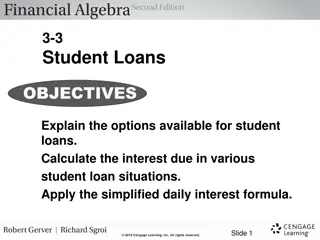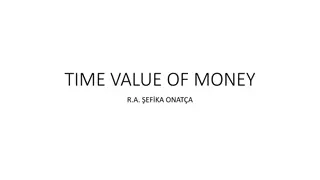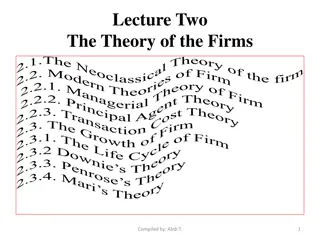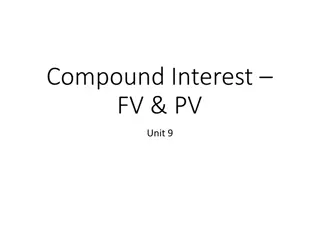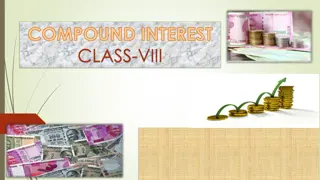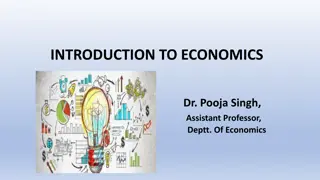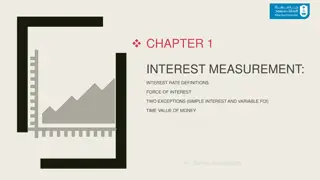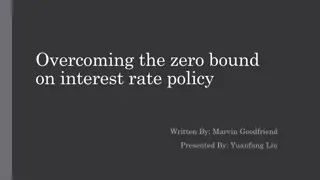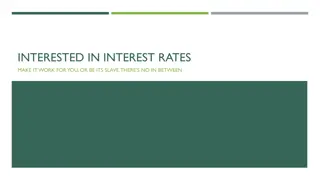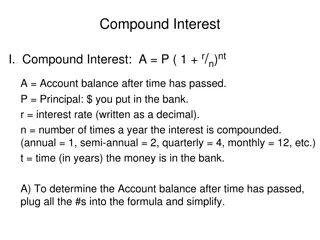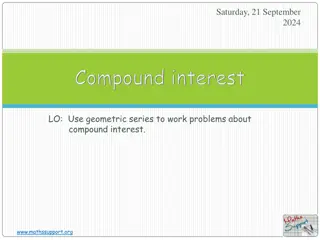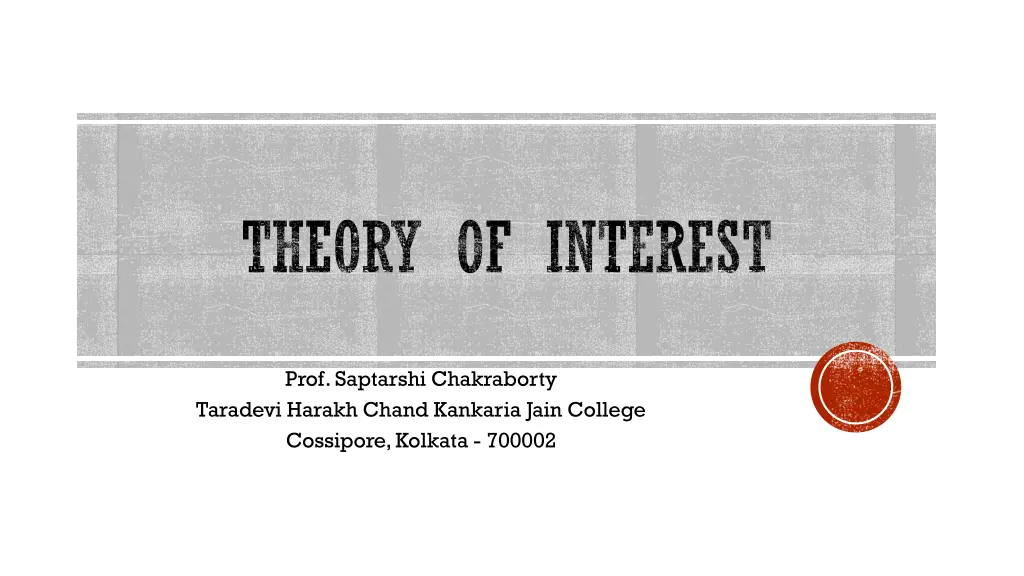
Understanding Theory of Interest and Its Key Concepts
Explore the theory of interest, definitions, types of interest, gross vs. net interest, interest rates, and theories of interest like Loanable Funds Theory. Learn about the factors influencing interest rates and how economic activities impact borrowing and lending. Enhance your knowledge of interest through detailed explanations and visual aids.
Download Presentation

Please find below an Image/Link to download the presentation.
The content on the website is provided AS IS for your information and personal use only. It may not be sold, licensed, or shared on other websites without obtaining consent from the author. If you encounter any issues during the download, it is possible that the publisher has removed the file from their server.
You are allowed to download the files provided on this website for personal or commercial use, subject to the condition that they are used lawfully. All files are the property of their respective owners.
The content on the website is provided AS IS for your information and personal use only. It may not be sold, licensed, or shared on other websites without obtaining consent from the author.
E N D
Presentation Transcript
THEORY OF INTEREST Prof. Saptarshi Chakraborty Taradevi Harakh Chand Kankaria Jain College Cossipore, Kolkata - 700002
DEFINITION OF INTEREST Interest is the price paid by the borrower to the lender for the use of borrowed funds during a certain period. In the other words of Eastham: Interest is the payment for parting with the advantage of liquid control of money balances . According to Batch: Interest is the price paid for the use of money or credit . It is normally expressed as a percentage on the funds loaned or borrowed. In the words of J.M.Keynes: Interest is the premium which has to be offered to induce people to hold their wealth in some form other than hoarded money .
GROSS INTEREST The interest earned on a deposit or security before the deduction of tax . Element Gross Interest is composed of some or all of the following elements: Net Interest 1. Insurance against Risk 2. Paynent for Inconvenience 3. Remuneration for Services 4.
NET/PURE INTEREST If from the Gross Interest, we deduct the payments made for : Insurance against Risks, 1. Inconvenience, and 2. For services of the lender, 3. We are left with Net or Pure Interest. Net or pure Interest is, thus, the payment for loanable funds only.
DEFINITION OF INTEREST RATE The price which a borrower pays for the use of money he/she does not own, and has no return to the lender who receives for deferring his/her consumption, by lending to the borrower.
THEORIES OF INTEREST Productivity Theory of Interest 1. Abstinence or Waiting Theory of Interest 2. Austrian or Agio Theory of Interest 3. Loanable Fund Thoery of Interest 4. Liquidity Preference Theory of Interest 5. Modern Theory of Interest 6. From the above mentioned theories, only Loanable Fund Theory of Interest is in your B.Com Sem-4 syllabus.
LOANABLE FUNDS THEORY Theory of how the general level of interest rates are determined Explains how economic and other factors influence interest rate changes Interest rates determined by demand and supply for loanable funds. This Thoery proposes that the general level of interest rates is determined by the complex interaction of two forces Thee first is the total demand for funds by firms, government, and households (or individuals), which carry out a variety of economic activities with those funds. This demand is negatively related to the interest rate (except for the Government s demand, which may frequently not depend on the level of the interest rate).
LOANABLE FUNDS THEORY (CONTD...) The Second force affecting the level of the interest rate is the total supply of funds by firms, governments, banks and individuals. Supply is positively related to the level of interest rates, if all other economic factors remain the same. With rising rates, firms and individuals save and lend more, and banks are more eager to extend more loans. (A rising interest rate probably does not significantly affect the government s supply of savings).





